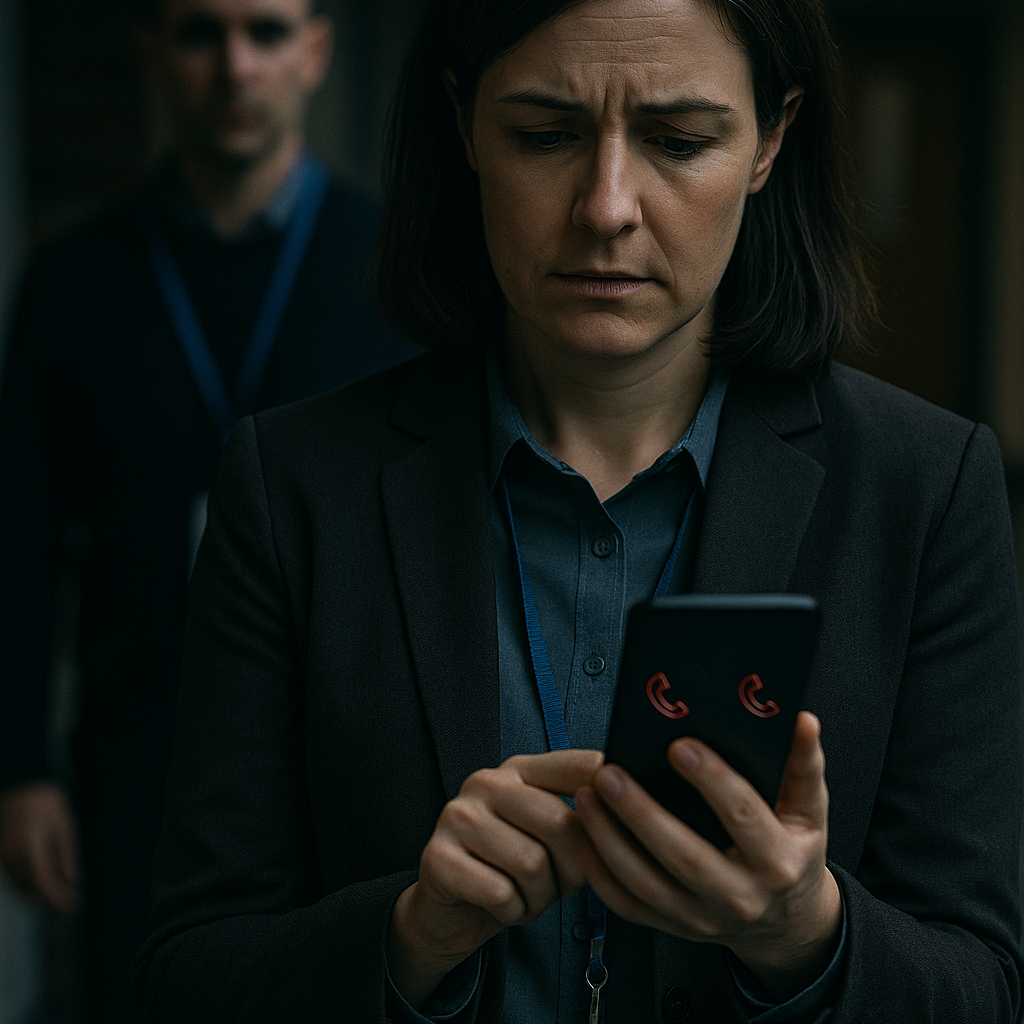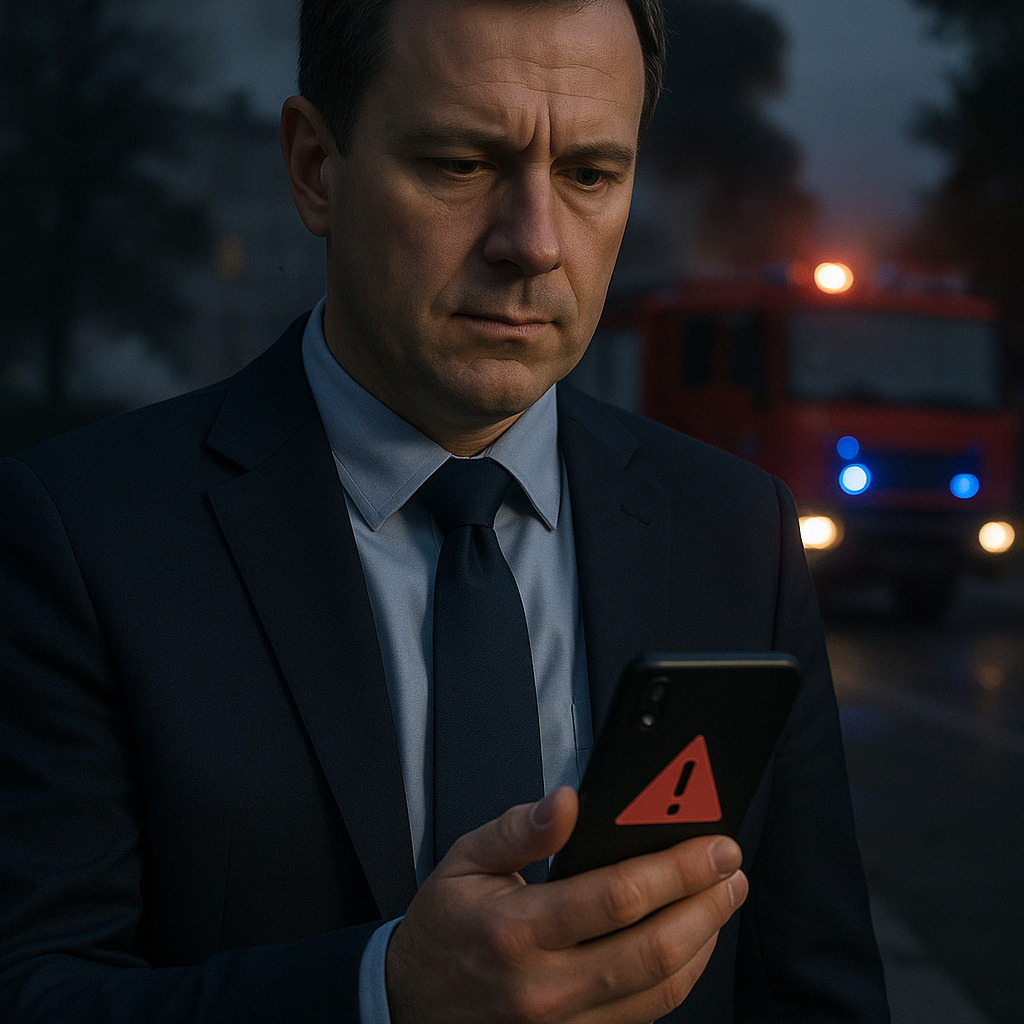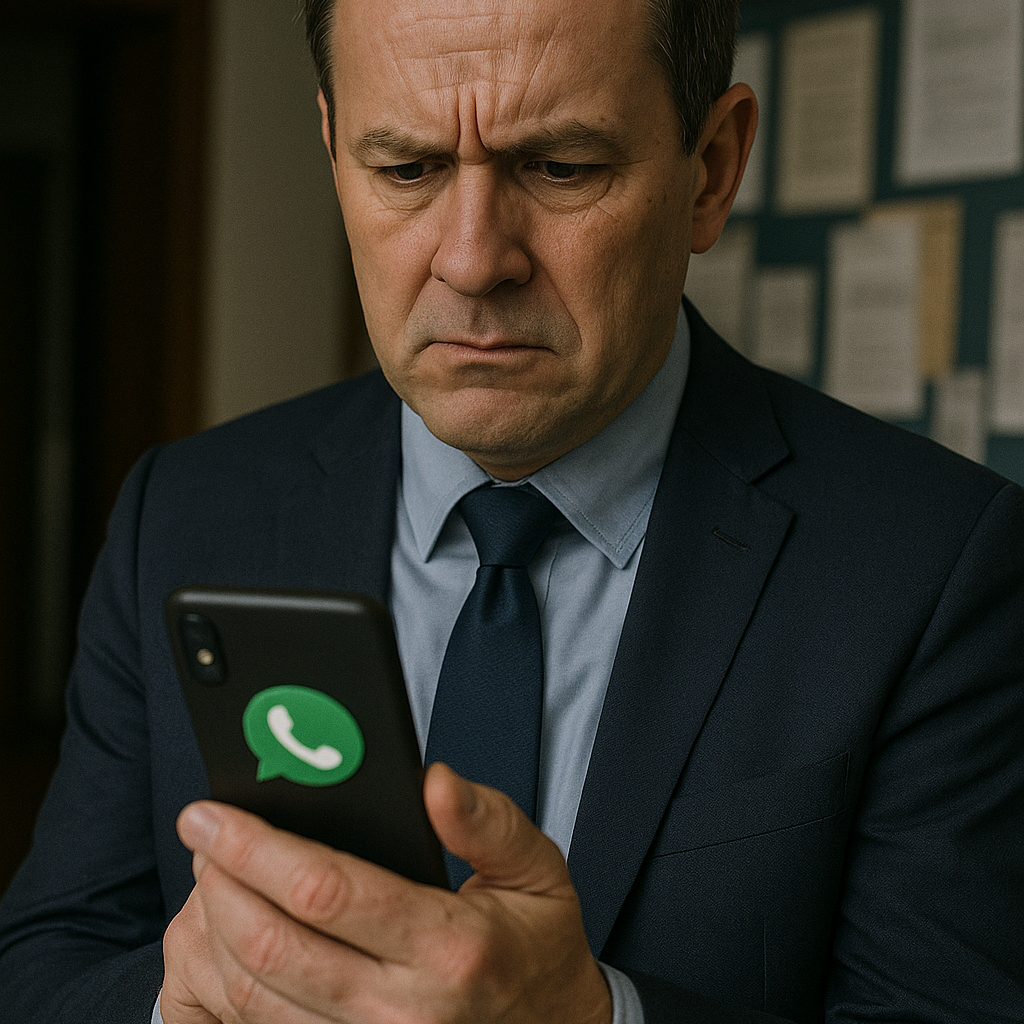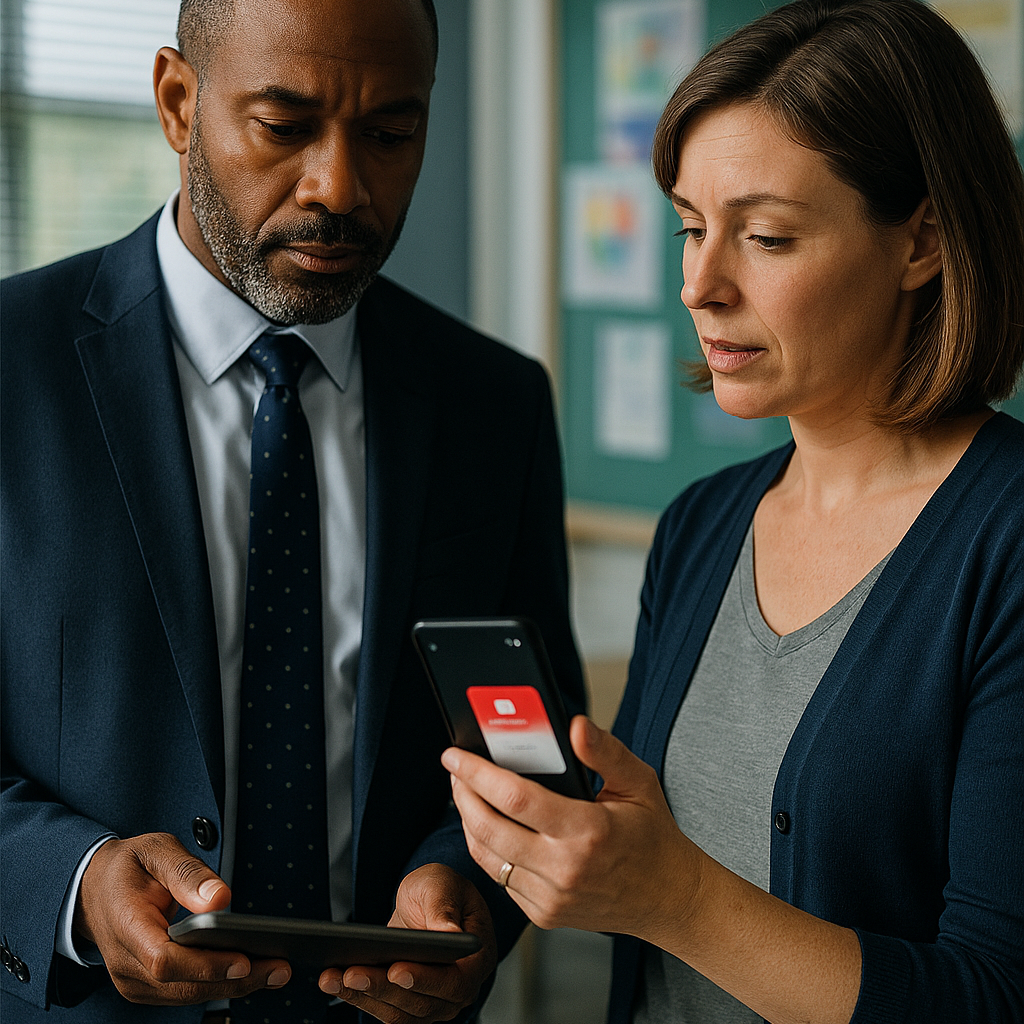
When the unexpected happens, parents need calm, accurate information from the school itself. Discover how clear planning turns panic into trust.
If (or more likely When) something unexpected happens in a school, the first question parents ask is simple: “What’s going on?”
In those moments, clarity and calm communication matter more than anything else. Parents are often anxious, social media begins to fill with speculation, and the school office phone starts ringing continuously.
How quickly and clearly a school communicates can make the difference between reassurance and confusion.
Good communication is not only a matter of reputation. It is a safeguarding requirement and an essential part of a school’s responsibility to keep its community safe and informed.
This article explores what parents expect, what often goes wrong, and how schools can create a clear plan to stay in control of communication during an emergency.
What Parents Expect in a Crisis
When something unsettling happens, e.g. a power cut, a local police incident, a lockdown, or even severe weather, parents’ first instinct is to worry. Their phones light up with messages from other parents asking what is happening. Within minutes, speculation begins to spread online.
What parents want more than anything is reassurance from the school itself. They do not expect every detail immediately, but they do expect honesty, empathy, and clear leadership. A brief message that says “We are aware of the situation and pupils are safe. We will update you shortly” can calm a hundred households at once.
In a crisis, parents are not just looking for information, they are looking for signs that the school is organised, confident, and in control. Silence or slow responses can unintentionally suggest the opposite.
Parents also expect communication to come through official channels. When they rely on other parents’ WhatsApp messages or Facebook comments, accuracy and confidentiality quickly disappear. A single misunderstanding can escalate into panic or unwanted media attention.
The most successful schools understand that communication is as important as the practical response itself. They plan ahead, decide who will take charge of parent updates, and make sure the tools are in place to send messages within minutes.
Being transparent and proactive strengthens relationships with parents. It shows respect for their concerns and reinforces trust in the school’s leadership. Even when an incident is minor, the way the school communicates can become a lasting example of its professionalism.
“If the school does not communicate, someone else will…
and not always with the facts.”
Why Speed and Clarity Matter
It often starts with something small. A teacher smells smoke near the kitchen block. The fire alarm sounds. Staff move pupils out calmly while the office phones begin to ring.
Within minutes, parents are texting one another, trying to piece together what is happening.
The headteacher is outside, checking registers and liaising with the fire service. Inside, the admin team is juggling phone calls, trying to keep up with the questions.
By the time the official “everyone is safe” message goes out, rumours have already travelled through three WhatsApp groups and a local community Facebook page. A few parents are already driving to the school gates.
No one meant for it to happen that way, it just did, because communication took a few minutes too long.
Those minutes matter. They shape how parents perceive the school’s control, its professionalism, and even its safeguarding standards. The faster and clearer a school communicates, the calmer the entire community becomes.
A short, accurate message in the first five minutes can prevent hours of confusion later. It shows leadership, restores trust, and stops misinformation from spreading.
Schools that rely only on email or phone trees often discover too late that those systems are simply not built for emergencies. By contrast, schools with a ready-to-send message template and a reliable broadcast tool can reach every parent in seconds, even while staff are managing the incident itself.
When parents know the school will contact them quickly and directly, they do not chase information elsewhere. That confidence protects everyone, pupils, staff, and the school’s reputation.
Every school eventually faces a moment where speed is tested. The only question is whether the plan is ready before that moment arrives.
“In an emergency, silence feels like chaos. Communication feels like control.”
Common Mistakes Schools Make
Most schools have an emergency plan, but when a real incident happens the weaknesses often appear in the first few minutes.
Mistakes are easy to make because they grow out of good intentions. Keeping people safe, avoiding panic, trying to do the right thing, keeping a cool head, the list goes on … yet they all can turn a manageable situation into a communications scramble.
Here are some common themes we have seen which can derail a manageable incident and turn it into chaos:
-
- Relying on email to reach parents
When a water main burst at a small prep school in Surrey, the office team sent an all-parent email at 8:40 a.m. to say that the site would close early. By 9:15, half the parents had not seen it because they were already on the school run or at work. Staff spent the rest of the morning answering calls instead of managing the closure.
- Relying on email to reach parents
Email is useful for follow-up information, but it is rarely seen quickly enough during the school day. Parents check texts far more reliably than inboxes.
-
- Depending on unofficial WhatsApp groups
At another school, a parent who belonged to several class WhatsApp groups tried to help by sharing what she “thought” she had heard from a teacher. Within minutes the story changed twice and began circulating in local community chats. By the time the school’s official message went out, the rumour was already that pupils had been injured — which was entirely false.
- Depending on unofficial WhatsApp groups
WhatsApp can spread information fast, but it cannot guarantee accuracy or privacy. Once a message leaves the school’s control, it cannot be corrected easily.
-
- Having no pre-approved message templates
In a power cut, the headteacher may know exactly what to say, but typing and approving wording while trying to manage an unfolding event wastes valuable time. Pre-approved templates mean anyone authorised can send an accurate, calm message instantly without waiting for approval.
- Having no pre-approved message templates
Being put on the spot to deliver a crisis communication that can fit into a single text message is not going to result in your best work.
-
- Leaving everything to one person
When the only person who knows how to use the school’s communication system is offsite, even the best plan can stall.
- Leaving everything to one person
Every school should have at least two trained staff who can trigger messages and check delivery reports. There are usually more out-of-school hours than on-site so having coverage and capability at all hours is key.
-
- Not testing the system until the real thing happens
Testing once each term may feel unnecessary, but it is the simplest way to spot broken contact details, expired login credentials, or outdated message templates.
- Not testing the system until the real thing happens
One person tasked with calling all parents found that a significant number of parents had changed their mobile numbers since the previous test. Finding that out during a drill is fine; finding it out during a real emergency is not.
Each of these situations has the same outcome, precious minutes lost, staff under pressure, and parents growing increasingly anxious. The good news is that every mistake can be prevented with clear planning, reliable tools, and a quick practice run.
Treat communication testing like a fire drill. Everyone hopes it will never be needed, but it proves that the system works when it truly matters.
Building a Clear Parent Communication Plan
A strong communication plan does not have to be complicated. It simply needs to be clear, rehearsed, and easy to activate when something unexpected happens.
The best outcomes emerge when schools treat communication as a formal part of their emergency planning rather than an afterthought. They decide in advance who will send messages, what those messages will say, who they will go to and how they will reach everyone.
When those decisions are made early, staff do not have to debate wording or hunt for contact lists while managing an incident. They can focus entirely on keeping people safe.
Define Clear Roles and Backups
Every school should identify a small, trusted team who can send messages on behalf of the school. For most schools this includes the headteacher, the designated safeguarding lead, and one or two senior administrators.
The plan should name a backup for each role in case someone is unavailable. If the head is offsite, another staff member should be able to trigger messages immediately without needing additional approval.
Clearly written instructions, stored digitally and accessible securely in a controlled way, make it easy for anyone in the team to act confidently when it matters.
Prepare Message Templates in Advance
In an emergency, simplicity is everything. Having short, calm messages already drafted saves time and prevents panic. Generic templates which don’t highlight a specific issue can be a useful first outreach.
For example:
“We are aware of an incident and all pupils are safe. Please do not come to the school at this stage. We will update you shortly.”
“Due to a power issue, we are closing early. Please collect pupils from the main gate at 1:00 p.m. Further updates will follow.”
Templates can be adapted quickly to fit the situation while maintaining a consistent tone and structure. That consistency helps parents feel reassured and prevents mixed messages.
Use Multiple Communication Channels
No single channel reaches everyone every time. Text messages are reliable, but push notifications can be faster, and voice calls ensure accessibility for parents who may not use smartphones.
Combining these channels ensures that every parent receives the message promptly, regardless of where they are or what device they use.
A good system automatically records delivery and read confirmations, giving the leadership team confidence that information has reached the entire community.
Keep Contact Data Up to Date
An emergency plan is only as strong as the data behind it. Schools should review parent contact details at the start of each term and encourage parents to confirm any changes.
Some schools include a “contact check” reminder in newsletters or during parents’ evenings. Others make it part of the re-enrolment process each year. Small habits like this ensure that communication always reaches the right people.
Practice and Review
Just as fire drills test evacuation routes, communication drills test readiness. Sending a simple “test message” once each term builds confidence for both staff and parents. It also familiarises staff with the tools so that they can act instinctively in a real event.
After each test, schools should review what worked and what could be improved. Did all messages arrive quickly? Were any numbers invalid? Did the tone feel calm and clear?
This quick review cycle turns a communication plan from a document on a shelf into a living, reliable part of school life.
A good communication plan does not eliminate emergencies, but it removes uncertainty. It gives every member of staff the confidence that they can inform parents quickly, accurately, and professionally — no matter what happens next.
“When communication is planned, response becomes calm, coordinated, and confident.”
Technology That Makes It Easier
When an emergency unfolds, the last thing anyone needs is to wrestle with a complicated system. The best technology disappears quietly into the background, making communication feel effortless and reliable.
Good tools help schools act quickly without adding pressure to already busy staff. They allow messages to be sent from any location, on any device, and to reach everyone at once. They remove uncertainty about who has been contacted and when.
What “Good” Looks Like
In an ideal world, a member of staff should be able to:
- Open a secure app or web portal
- Select a pre-prepared message
- Choose which groups to contact
- Press send
- Know that parents will receive the message within seconds
Afterwards, they can check which messages were delivered and see confirmations from parents who have read them.
That audit trail provides peace of mind and supports safeguarding documentation.
A system designed specifically for schools will also offer:
- Multiple communication channels such as SMS, voice, and push notifications
- Simple group management, allowing messages to go to parents, staff, or governors as needed
- Secure access controls, ensuring only authorised staff can send updates
- Offline reliability, so information can still be shared if normal networks are disrupted.
The more you can prep messages and distribution lists the simpler your task will be when it comes to a live situation.
Keeping It Simple for Staff and Parents
Technology should support the way schools already work, not force them to adapt. Staff should be able to send an alert in moments, even during the most stressful situations. Parents should receive clear, consistent messages on the devices they use every day, without needing to learn new systems.
Good communication software creates calm. It turns chaos into a series of confident, visible actions. Messages reach the right people quickly, and everyone involved knows what is happening.
When communication feels seamless, it gives leadership teams the space to lead, teachers the space to focus on pupils, and parents the reassurance that their children are safe.
“The right system does not just send messages. It restores calm.”
Turning Communication into Confidence
When parents look back on a stressful day, they often remember one thing above all else — how the school kept them informed.
A short, calm message in those first few minutes can transform panic into trust. It shows that the school understands what parents need and that it has the structure and systems to deliver.
Good communication is more than a technical process. It is an act of leadership. It tells families that the school has a plan, that it is prepared, and that it values transparency as much as safety.
Schools that take communication seriously are remembered for the right reasons. Staff feel supported because they know exactly what to do. Parents feel respected because they receive information quickly and directly. Governors and inspectors notice the professionalism because there is evidence that the plan works.
It only takes one well-handled incident to prove to your entire community that the school can be trusted — no matter what happens.
Confidence grows from clarity. And clarity comes from preparation.
“When every minute counts, calm communication protects both people and reputation.”
Ready to Strengthen Your School’s Communication?
Imagine knowing that every parent can be reached in seconds, that every message is tracked, and that every member of staff knows exactly what to do. That peace of mind is what good communication delivers.
The Calling Tree helps schools create that confidence. It provides a simple, secure way to reach parents and staff quickly, confirm delivery, and keep everyone informed when it matters most.
Whether you are a small independent school or part of a larger trust, you can put calm, clear communication at the heart of your safeguarding plan — and be ready before it matters.




